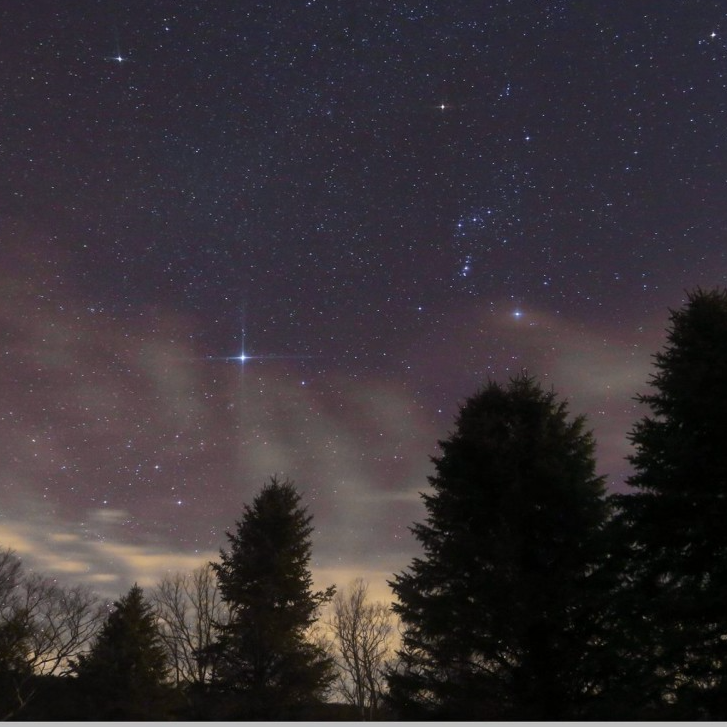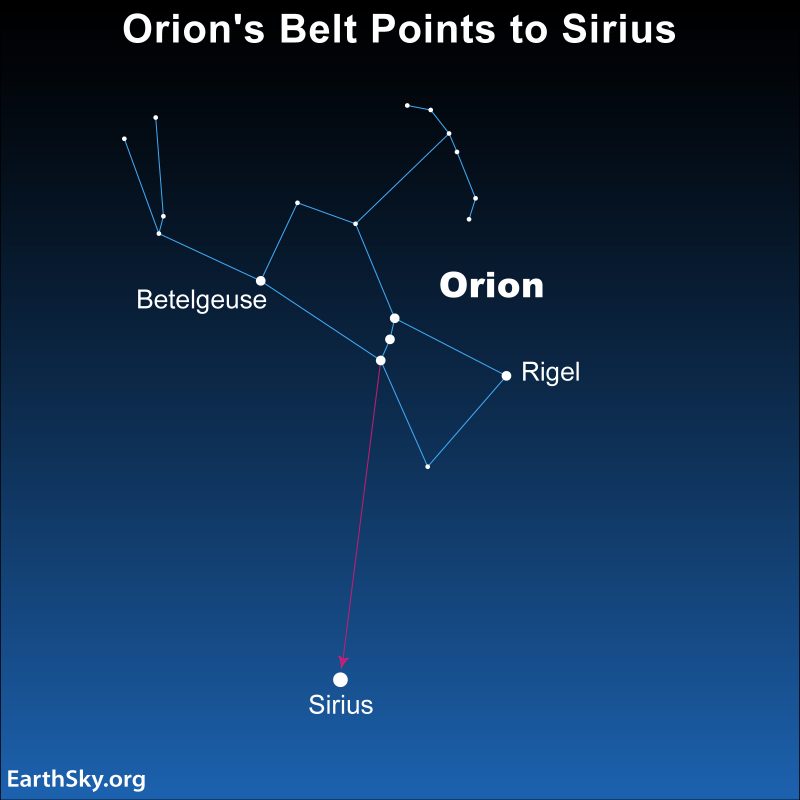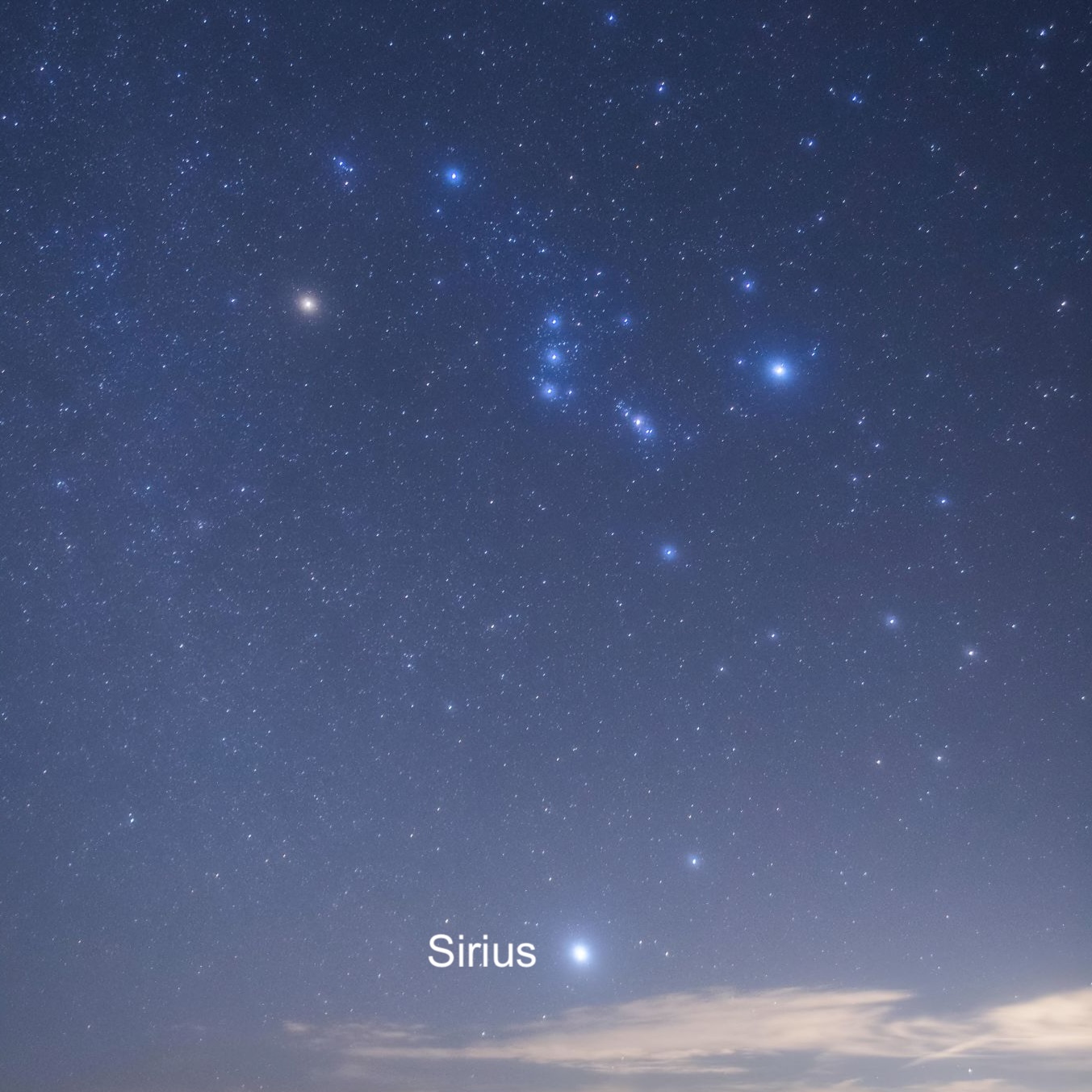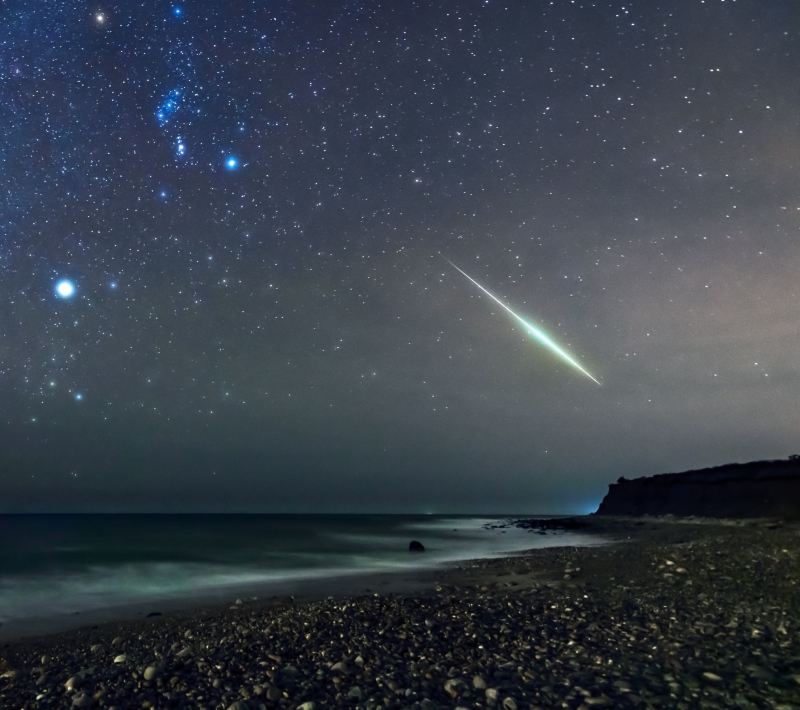
Maybe you know that Sirius is the brightest star in the night sky. But is Sirius the most luminous star? The answer is no. To astronomers, the word luminous refers to a star’s intrinsic brightness, or its absolute magnitude. To put it more simply, if all the stars were equally distant from Earth, would Sirius be the brightest? Not even close. It just looks bright because it’s close to us, only 8.6 light-years away.
Consider the 25 brightest stars (not counting the sun) as seen from Earth. Sirius is the brightest in apparent magnitude, that is, its brightness as observed from Earth. If you took those exact same 25 stars and ranked them by absolute magnitude, or imagined they were all the same distance from Earth, Sirius would drop from 1st to 21st brightest.
The brightest star from Earth
Sirius, in the constellation Canis Major the Greater Dog, looks extraordinarily bright in Earth’s sky. It’s our sky’s brightest star (not counting our daytime star, the sun). But its brightness stems primarily from the fact that it’s close to us, only 8.6 light-years away.
No matter where you live on Earth, just follow the three medium-bright stars in Orion’s Belt to locate Sirius.
2024 lunar calendars on sale now. Makes a great gift! Check it out here.

The colors of Sirius
Many people comment that they see Sirius flashing colors. This happens when you see Sirius low in the sky. The colors are just the ordinary rainbow colors in white starlight; all starlight is composed of this mixture of colors. We notice the sparkling colors of Sirius more readily, though, because Sirius is so much brighter than most stars.
The extra thickness of the Earth’s atmosphere near the horizon acts like a lens or prism, breaking up starlight into the colors of the rainbow and causing a star to sparkle. When you see Sirius low in the sky, you’re looking through more atmosphere than when the star is overhead.
If you watch, you’ll notice Sirius sparkling less, and appearing less colorful (more strictly white) when it appears higher in the sky.

Stars more luminous than Sirius
Scientists think at least three stars in the constellation Canis Major, where Sirius resides, are thousands of times more luminous than Sirius: Aludra, Wezen and Omicron 2. Although the distances to these faraway stars are not known with precision, Aludra and Omicron 2 lie at an estimated 3,000 light-years distant, and Wezen at about 1,800 light-years. That’s in contrast to Sirius’ distance of only 8.6 light-years.
When scientists compare stars by absolute magnitude, they imagine that all the stars are 32.6 light-years away. At this distance, our sun would barely be visible as a speck of light. In stark contrast, Aludra, Wezen and Omicron 2 would outshine Sirius by some 100 to 200 times. And Sirius would be about the same brightness as the star Castor in Gemini. Imagine how much different Canis Major would look!
Read more about stellar luminosity, the true brightnesses of stars

Bottom line: Sirius is the brightest star in Earth’s sky because of how close it is to us. It’s so spectacularly bright that you might see glints of different colors flashing from it.











